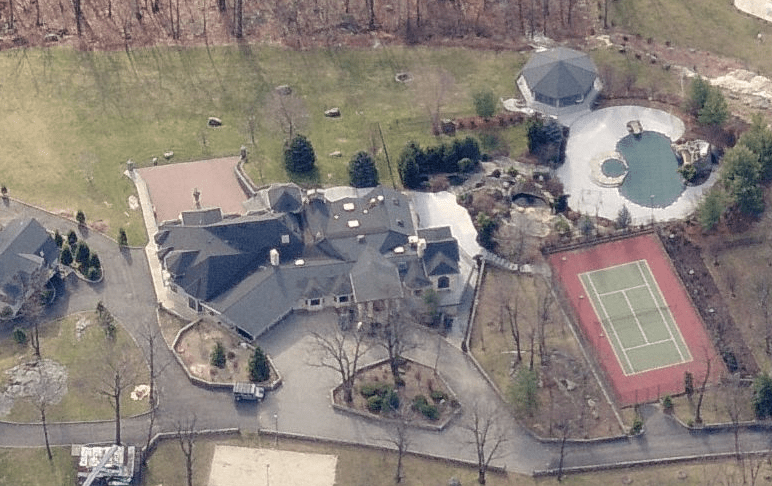Revitalizing City Centers: The Role Of Sports Stadiums

Table of Contents
Economic Impact of Stadiums on City Centers
The construction and operation of sports stadiums offer significant economic benefits to surrounding city centers. These benefits ripple outwards, impacting a wide range of businesses and residents.
Increased Tourism and Spending
Sports stadiums act as powerful magnets for tourism. Major sporting events, concerts, and other stadium-based activities draw significant numbers of visitors, boosting local economies. This influx of tourists translates into substantial increases in spending across various sectors.
- Increased hotel occupancy rates: Hotels near stadiums often experience significant spikes in bookings during major events.
- Higher restaurant revenue: Restaurants and bars in the vicinity see a surge in customers, leading to increased revenue and job creation.
- Growth in retail sales near the stadium: Retail businesses benefit from the increased foot traffic, resulting in higher sales and a positive economic ripple effect.
- Studies show that major sporting events can increase tourism revenue by a substantial percentage, with some cities reporting increases exceeding 20%. The economic impact extends beyond immediate spending, with visitors often making repeat visits or recommending the city to others.
Job Creation and Employment Opportunities
The development and operation of a sports stadium generate a significant number of employment opportunities across various sectors. This job creation boosts the local economy and provides valuable skills development opportunities.
- Construction jobs: Thousands of jobs are created during the construction phase of a new stadium, encompassing roles in architecture, engineering, construction management, and skilled trades.
- Event staff: Stadiums require a large workforce to manage game days and other events, including security personnel, ushers, ticket takers, and concessions staff.
- Hospitality workers: Hotels, restaurants, and bars near the stadium create numerous jobs in the hospitality sector, catering to the increased demand during events.
- Retail jobs: Retail businesses around the stadium often expand their workforce to meet the increased consumer demand. This creates opportunities for both full-time and part-time employment.
- The construction of a new stadium alone can create thousands of jobs, providing a substantial boost to the local employment market. These jobs are not limited to temporary positions; many lead to permanent roles in the ongoing operations of the stadium and surrounding businesses.
Property Value Appreciation
The presence of a sports stadium can significantly impact property values in the surrounding area. This increase in value benefits both homeowners and investors.
- Increased demand for residential and commercial properties: The desirability of living or working near a major sporting venue leads to increased demand and higher property prices.
- Higher rental rates: Rental properties near stadiums often command higher rates due to their proximity to events and entertainment.
- Improved property tax revenue: The increased property values translate to higher property tax revenue for the local government, which can then be reinvested in community development projects.
Community Development and Social Benefits
Beyond the economic advantages, sports stadiums contribute significantly to community development and social well-being. They become focal points for community pride and social interaction.
Enhanced Community Engagement and Social Cohesion
Stadiums foster a sense of community pride and shared identity. They become gathering places that bring people together from diverse backgrounds.
- Increased community gatherings: Stadiums often host community events beyond sporting events, such as concerts, festivals, and family-friendly activities.
- Family-friendly events: Many stadiums offer family-oriented events and activities, creating opportunities for families to spend quality time together.
- Improved social interaction: The shared experience of attending a sporting event creates opportunities for social interaction and bonding.
- The stadium becomes a central meeting point, bringing diverse groups together and fostering a stronger sense of community.
Improved Infrastructure and Urban Planning
The development of a sports stadium often necessitates improvements to the surrounding infrastructure, enhancing the overall quality of life for residents.
- Improved public transportation: To accommodate the influx of people attending events, cities often improve public transportation options, such as bus routes and subway lines.
- Upgraded roads: Roads and highways in the vicinity of stadiums are often upgraded to handle increased traffic volume.
- New parks and green spaces: Some stadium developments incorporate new parks and green spaces, providing recreational areas for the community.
- Better pedestrian access: Improved pedestrian walkways and cycling paths often accompany stadium development, making the area more pedestrian-friendly.
- The development often results in significant improvements to public transportation, making the area more accessible and reducing traffic congestion.
Public Health and Wellness
Sports stadiums can contribute to public health and wellness by promoting physical activity and community involvement.
- Promotion of healthy lifestyles: The focus on sports and physical activity encourages healthier lifestyles within the community.
- Increased walking and cycling: Improved infrastructure often encourages walking and cycling as modes of transportation, promoting physical fitness.
- Community health initiatives: Some stadiums partner with local health organizations to promote community health initiatives.
Addressing Potential Challenges and Concerns
While the benefits of sports stadiums are significant, it's crucial to address potential challenges proactively.
Traffic Congestion and Parking Issues
Increased traffic congestion and parking shortages are potential negative consequences of stadium development. However, these can be mitigated with careful planning.
- Strategies for mitigating traffic congestion: Improved public transport, staggered event times, and ride-sharing incentives can help alleviate traffic congestion.
- Solutions for parking shortages: Park-and-ride schemes, increased public parking, and the promotion of alternative transportation methods can help address parking limitations.
Noise Pollution and Environmental Impact
Noise pollution and environmental damage are concerns that must be addressed through sustainable practices.
- Noise reduction measures: Employing noise barriers and other noise reduction technologies can minimize noise pollution during events and construction.
- Sustainable construction practices: Utilizing sustainable building materials and employing environmentally friendly construction techniques reduce the environmental footprint.
- Waste management strategies: Implementing effective waste management plans reduces waste and promotes recycling.
- Energy-efficient stadium design: Designing energy-efficient stadiums reduces energy consumption and minimizes the environmental impact.
Displacement and Gentrification
Rising property values around stadiums can lead to the displacement of existing residents. This must be carefully addressed.
- Strategies for affordable housing: Implementing policies to protect affordable housing options is crucial to prevent displacement.
- Community engagement initiatives: Engaging with the community and incorporating their input during the planning stages can help to ensure inclusive development.
Conclusion
Sports stadiums can play a powerful role in revitalizing city centers, offering a multitude of economic, social, and community benefits. By carefully planning and implementing strategies to mitigate potential challenges such as traffic congestion and gentrification, cities can harness the power of sports stadiums to achieve significant and sustainable revitalization. Let's explore the transformative potential of incorporating sports stadiums into urban renewal projects and revitalize our city centers, creating vibrant and thriving communities. By considering the various facets of sports stadium development and its impact on urban areas, we can foster successful city center renewal using sports stadiums as catalysts for growth.

Featured Posts
-
 Mtv Cribs A Tour Of Extravagant Mansions
May 11, 2025
Mtv Cribs A Tour Of Extravagant Mansions
May 11, 2025 -
 Celtics Clinch Division Magic Blowout Win
May 11, 2025
Celtics Clinch Division Magic Blowout Win
May 11, 2025 -
 Chainalysis Acquisition Of Alterya Boosting Blockchain Security With Ai
May 11, 2025
Chainalysis Acquisition Of Alterya Boosting Blockchain Security With Ai
May 11, 2025 -
 Exploring Lavish Homes An Mtv Cribs Inspired Tour Of Rich Kids Cribs
May 11, 2025
Exploring Lavish Homes An Mtv Cribs Inspired Tour Of Rich Kids Cribs
May 11, 2025 -
 Mtv Cribs The Ultimate Guide To Rich Kids Homes
May 11, 2025
Mtv Cribs The Ultimate Guide To Rich Kids Homes
May 11, 2025
